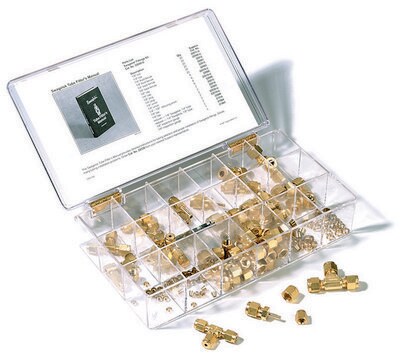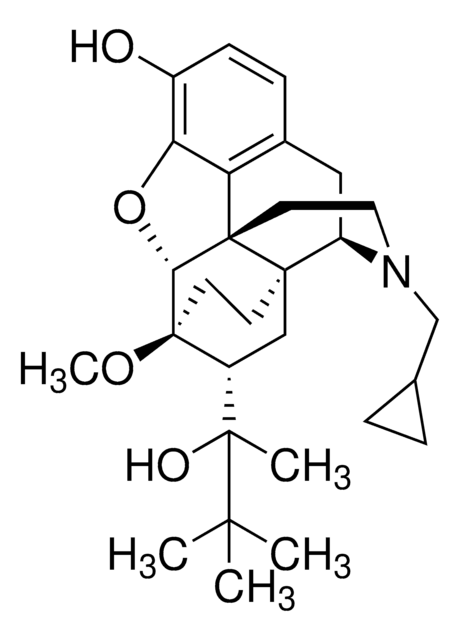02870
Ethanol
ACS reagent, prima fine spirit, without additive, F15 o1
Synonym(s):
Ethyl alcohol
About This Item
78 °C
44.6 mmHg
Recommended Products
grade
ACS reagent
Quality Level
vapor density
1.59 (vs air)
1.59 (vs air)
vapor pressure
44.6 mmHg ( 20 °C)
44.6 mmHg
form
liquid
autoignition temp.
683 °F
quality
prima fine spirit, without additive, F15 o1
shelf life
~7 yr
expl. lim.
19 %, 60 °F
19 %
availability
available only in Switzerland
impurities
≤0.001% aldehyde (as CH3CHO)
≤0.001% formaldehyde (HCHO)
≤0.001% ketone (as CH3COCH3)
≤0.002% free acid (as CH3COOH)
≤0.2% methanol (CH3OH)
evapn. residue
≤0.001%
color
clear
refractive index
n20/D 1.3600 (lit.)
pH
7.0 (20 °C, 10 g/L)
bp
78 °C (lit.)
78 °C
mp
-114 °C
−114 °C (lit.)
solubility
water: soluble (completely)
cation traces
Al: ≤0.5 mg/kg
Ba: ≤0.1 mg/kg
Bi: ≤0.1 mg/kg
Ca: ≤0.5 mg/kg
Cd: ≤0.05 mg/kg
Co: ≤0.02 mg/kg
Cr: ≤0.02 mg/kg
Cu: ≤0.1 mg/kg
Fe: ≤0.1 mg/kg
K: ≤0.5 mg/kg
Li: ≤0.1 mg/kg
Mg: ≤0.1 mg/kg
Mn: ≤0.02 mg/kg
Mo: ≤0.1 mg/kg
Na: ≤1 mg/kg
Ni: ≤0.02 mg/kg
Pb: ≤0.1 mg/kg
Sr: ≤0.1 mg/kg
Zn: ≤0.1 mg/kg
SMILES string
CCO
format
neat
InChI
1S/C2H6O/c1-2-3/h3H,2H2,1H3
InChI key
LFQSCWFLJHTTHZ-UHFFFAOYSA-N
Looking for similar products? Visit Product Comparison Guide
Related Categories
Application
- Poly(sulfobetaine) versus poly(ethylene glycol) based copolymer modified polyurethane catheters for antifouling: This study examines the use of ethanol in the synthesis of polymers designed to reduce biological fouling on medical devices, highlighting its role in advanced healthcare materials research (Cao et al., 2024).
- Green synthesis of polyimide by using an ethanol solvothermal method for aqueous zinc batteries: Ethanol is used as a green solvent in the innovative synthesis of polyimide structures, emphasizing its importance in sustainable material production and energy storage solutions (Zhao et al., 2024).
- Modulation of gut microbiota with probiotics as a strategy to counteract endogenous and exogenous neurotoxicity: Research explores the indirect applications of ethanol in the solvent extraction processes used for studying neuroprotective strategies in medical research (Skalny et al., 2024).
- Superselective Ablative Chemo-ethanol Embolization for Recurrent Single Hepatocellular Carcinoma: A Six-Month Outcome Analysis: This clinical study utilizes ethanol directly in therapeutic interventions, demonstrating its critical use in oncological treatments to improve patient outcomes (Lee et al., 2024).
- Self-Assembly Reinforced Alginate Fibers for Enhanced Strength, Toughness, and Bone Regeneration: Ethanol is employed in the processing of novel biomaterials designed for medical applications, showcasing its utility in the development of regenerative medicine technologies (Cui et al., 2024).
Other Notes
The article number 02870-6X1L-F will be discontinued. Please order the single bottle 02870-1L-F which is physically identical with the same exact specifications.
The article number 02890-4X2.5L-F will be discontinued. Please order the single bottle 02890-2.5L-F which is physically identical with the same exact specifications.
Footnote
Disclaimer
greener alternative product
signalword
Danger
hcodes
Hazard Classifications
Eye Irrit. 2 - Flam. Liq. 2
Storage Class
3 - Flammable liquids
wgk_germany
WGK 1
flash_point_f
55.4 °F - closed cup
flash_point_c
13 °C - closed cup
Choose from one of the most recent versions:
Already Own This Product?
Find documentation for the products that you have recently purchased in the Document Library.
Our team of scientists has experience in all areas of research including Life Science, Material Science, Chemical Synthesis, Chromatography, Analytical and many others.
Contact Technical Service









